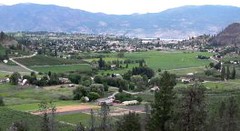Costs of Community Services
Virtually all of the studies show that the COCS ratio
is substantially above 1 for residential land, demonstrating
that residential land is a net drain on local government
budgets. The average estimate ranges from about 1.15 to 1.50,
which means that for every dollar collected in taxes and
non-tax revenue, between $1.15 and $1.50 gets returned
in the form of local government and school
district services. On the other hand, the COCS ratios for
the other two land use categories are both substantially below 1.
For commercial/industrial, the ratio usually ranges from
0.35 to 0.65, indicating that for every dollar collected,
the local government provides only about 35 to 65 cents
worth of services. For agriculture and open space, the
ratios are only slightly smaller, usually ranging from o.30 to 0.50.
To me, this means that for every area of Farmland, or Open Land, that we develop into residential, we are creating greater costs to this community. The tax collected from these new developments will not sufficiently cover these costs, so either all of our taxes go up, or, we need to develop an equal ratio of industry/commercial properties to help offset those costs. It is actually our desire for more residential development that is creating the need for more industrial/commercial land.
Other researchers have attempted to measure the costs of
growth simply by measuring the statistical relationship
between population growth rates and per capita local
government spending. Most of these results have shown
that in areas with very small growth rates (in the range of
1 to 2 percent per year), costs do not escalate rapidly.
For communities with higher growth rates (above 3 percent
per year),
however, per capita spending begins to increase very
dramatically. The findings of the various types of studies
on costs of services seem to support the conclusion
that local public per capita spending increases when
farmland and open space are converted to residential
development.I encourage everyone to visit this link. It is an interesting read and will shed some light on the true costs associated with the potential growth of Summerland.


1 Comments:
This an excellent piece of research, Amie. I plan to publicize some of the material found in this article including the two excerpts you have posted here as well as one additional point in the Summerland Review over a period of three weeks:
1. It is obviously true that when farmland, open space, and woodlands are converted to residential development, local tax revenues increase substantially. But the local government and the school district are also required to provide added services to the new residents. Does the increased revenue cover the costs of the new services? Rarely. Virtually all of the studies show that the cost of community service for residential land is a NET DRAIN on local government budgets.
Frank Martens
May 21, 2005
By Anonymous, at 4:29 p.m.
Anonymous, at 4:29 p.m.
Post a Comment
<< Home